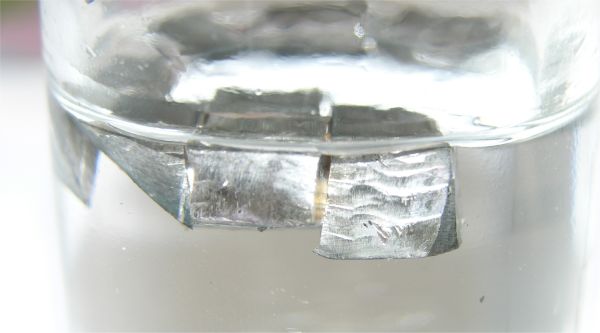
Timelines 10
Man and his Senses 10
Man and his Inventions 10
Geography 10
Fauna 10
Timelines 10
Man and his Senses 10
Man and his Inventions 10
Geography 10
Fauna 10

At the end of a long industrial century, mining in Central Europe and South Asia reads like a ledger of broken certainties.
For decades, Czechia was shaped by coal: deep galleries, company towns, and a pattern of work that sustained factories and municipal lights. Today that geography is in flux—the last hard‑coal seams are closing and, in their place, a different mineral promise has appeared on maps and government plans: lithium.
Lithium’s draw is not abstract; it underpins lithium‑ion batteries for electric mobility and grid‑scale energy storage and is used across manufacturing and even pharmaceuticals, which is why it sits at the center of contemporary industrial strategy.
In the faraway Indian state of Jammu and Kashmir, too, a discovery in the Reasi district has reopened the question that every modern country now faces: how to convert mineral wealth into economic security without polluting the lives and waters that surround it—a question India increasingly frames through its broader “critical minerals” lens.
Both stories are about resource transition, but they are also stories of contested futures: of towns that once depended on coal now being offered a fragile hope of “white gold,” and of a newly confident state trying to stitch mineral strategy into national industrial policy.
The Czech case is illustrative of the pattern. In a country long accustomed to coal’s social economy, the strategic designation of lithium deposits has suddenly recast familiar debates about extraction, labour, and landscape.
The government’s move to declare the Cínovec and Horní Slavkov deposits as strategic is a deliberate pivot: mineral policy is being framed as resource security, with the state signalling that domestic lithium should anchor a homegrown EV battery supply chain rather than rely on distant import dependencies. That stance is both industrial and political—an attempt to channel investment, jobs, and downstream capacity into domestic soil and to position Czechia for a role in Europe’s EV value chain. The decree itself is a turning point: it supports planned investments and fast‑tracks a pathway that explicitly ties national competitiveness to lithium availability and processing within the country.
Yet intentions and realities rarely coincide. As sites are reframed for a low‑carbon economy, the details still matter: the specific geology at Cínovec, the proposed extraction route, and the infrastructure demands must align with social license and remediation plans if the strategic promise is to translate into durable outcomes on the ground. The promise of regeneration—jobs for former miners, revitalized industrial clusters, and a domestic battery chain—must be matched by credible answers to classic extractive questions: who benefits, who bears cost, and how local life is protected through the cycle of mining, processing, and closure.
A further corrective to triumphant policy frames is offered by trade reality, which reveals where capacity actually sits today. As far as Indo–Czech minerals and chemicals trade is concerned, the data shows modest category flows—for example, India’s imports from the Czech Republic of “Mineral or Chemical Fertilizers, Potassic” totalled US$10.52 thousand in 2024—signalling a bilateral channel that exists but is hardly the driver of either country’s minerals strategy at present.
India’s story runs a parallel but distinct course. New finds have been met with strategic urgency because India treats “critical minerals” as those essential to economic development and national security, explicitly linking them to high‑tech manufacturing and the energy transition. The government has identified 30 critical minerals—including lithium—through a formal assessment process, underscoring the need to reduce import dependence and build domestic capability in batteries and other clean‑energy technologies. This framing dovetails with the Jammu & Kashmir discovery narrative, tying potential domestic feedstock to national goals in EVs, storage, and strategic autonomy.
But policy cannot be all promise and no plumbing. Extraction methods, water demand, pilot processing, and remediation are determinative of whether a find becomes a mine or remains a deferred promise in a sensitive landscape. The emphasis on critical minerals is therefore inseparable from institutional capacity: transparent contracts, independent environmental audits, realistic timelines for processing, and community‑anchored benefit sharing are not optional extras but enabling conditions.
Where the Czech state centralizes control through strategic designation, it must retain legitimacy through consultation and clear environmental safeguards tied to the EV supply chain it seeks to build. Where India courts rapid development in a sensitive region, it must align its critical‑minerals roadmap with safeguards that protect watersheds and livelihoods while building the processing capacity its energy transition requires.
The transition will fail if it replicates the old logic—extract, profit, abandon—under greener branding, because the mineral in question does not absolve the system that brings it to market. If these two cases teach anything in common, it is this: geological promise is necessary but not sufficient.
The shift from coal to lithium is not merely a change of commodity; it is a change of social contract, and that contract must be written with the institutions that process minerals, the workers who depend on them, and the communities that live with their consequences. Both Czechia and India face hard choices about who governs extraction, how the spoils are distributed, and what measures are non‑negotiable in defence of water conservation and livelihood as they tie mineral policy to energy security and industrial futures.
That is the crux: the future of mines is less a question of reserves than of the political imagination that shapes extraction—and whether societies will allow another mineral boom to bury one more generation’s rights beneath the weight of short‑term gain while the trade data quietly reminds us how much capacity still must be built.
Sources:
https://tinyurl.com/bdz75xw9
https://tinyurl.com/29un269c
https://tinyurl.com/344m5yzh
https://tinyurl.com/4mu5xysv
https://tinyurl.com/5n82b7ew
https://tinyurl.com/2c6psxfd
https://tinyurl.com/mtm8mrdh
https://tinyurl.com/42sruwwf
https://tinyurl.com/3zfts4k2
https://tinyurl.com/h6kv2nn8
https://tinyurl.com/u4nzcsuw
https://tinyurl.com/mreadvad
https://tinyurl.com/4nd3749j